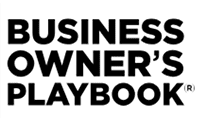Online shopping continues to reach new heights, with global companies reporting $6 trillion in ecommerce revenue in 2024. Shoppers today expect to buy direct through websites, social media or other platforms. But how is a small business supposed to get into the game and compete?
If you’re one of the more than 33 million small businesses in the United States, it’s worth a try. With a little planning and experimentation, small businesses can gain a competitive edge, connect with customers and increase sales.
3-Steps for Small Business Owners to Get Started with eCommerce
Whether you’ve dabbled in eCommerce, have never taken an online order or consider yourself an expert, there’s always an opportunity for growth. Here’s a few ways your business, whether you’re a local coffee shop or a t-shirt designer, can find success.
Step 1 – Decide what you’ll sell online.
Every business can sell something online. That may sound like a bold statement, but even businesses that typically don’t sell physical goods can start. The key here is to align whatever you decide to sell with your current brand and/or product offering. If your business is a local breakfast cafe, for example, consider selling branded mugs or freshly roasted coffee beans. A salon might look at selling products, gift cards or locally made hair accessories.
Look at your inventory and decide what you want to move off the shelves. Promote these items on social media or newsletters with bulk discounts. Be sure to check that anything you do sell online can be packaged and shipped safely and easily.
If your business enjoys an especially loyal customer base, consider selling creative merchandise as a way for your customers to further show their support of your business. Popular branded items include hats, clothing, tote bags and various types of cups. While promoting these items online, share the message that by purchasing your merchandise customers are supporting a brand, product or employee they believe in.
Step 2 – Consider your audience.
Once you’ve identified what you will sell online, consider how the audience you’ll sell to might differ from your current in-person customer base. After you’ve outlined potential customers, consider how this target audience would shop online:
- Do they browse from their phones or computers?
- Do they visit your website already?
- Do they see your products from social media platforms?
Answering these questions will help you choose the best way to present your products online, and which type of eCommerce platform to use. Don’t worry, we’ll get to that in Step 3.
If you’re already using eCommerce, consider going through this exercise anyway. Your eCommerce tools may need updating as your audience’s preferences change over time. Completing this step will help make sure that you’re using the best eCommerce tools for your business and for your customers.
Step 3 – Determine how you’ll sell online.
This step will help with the logistics of setting up and selling via eCommerce. Once you know what you’re going to sell and to whom you plan to sell, it’s time to decide how you want to sell online. You can choose to keep it simple for short-term boost, or use this as an opportunity to create a long-term eCommerce strategy.
For a true eCommerce strategy, you’ll need to make it possible for customers to not only shop, but also pay via your website. To sell from your existing website, add eCommerce-related upgrades. Choose from eCommerce extensions or plug-ins (depending on your website software), or by adding an easy-to-use Shopify “Buy Now” link button.
If the software hosting your current website is outdated or clunky, then you should try starting fresh. Create a new website using an all-in-one website and eCommerce platform. They have everything from easy-to-use website design templates and domain names, to shopping carts and credit card processing. A few of the top all-in-one platforms include:
- Shopify – Everything is included. You’ll get a domain name and have a secure shopping cart so you can accept credit cards and PayPal payments. The service also offers ready-to-go templates or custom-designed themes.
- Volusion – Beyond standard all-in-one features, Volusion allows you to integrate your online store with Facebook, Amazon and eBay. This is especially helpful for businesses that want to tap into a customer base that enjoys shopping via those channels.
- BigCommerce – This platform integrates with plenty of other applications that small businesses often use including Mailchimp, Constant Contact, Quickbooks, and more. It also offers marketing features that help with search engine optimization (SEO), special offers, product reviews and more.
- Square Online – This company offers customizable e-commerce themes crafted for online selling, without coding experience and integration into social media. Includes extras like personalization and record tracking.
When comparing platforms, keep your customers and their shopping habits in mind, along with any marketing tactics you plan to use to capture customers’ attention. Use those as a guide to look for the right eCommerce solution for your business.
Next Steps: Want to learn more? Sign up for the Small Biz Ahead newsletter to receive a weekly roundup of the latest tools, trends, and resources.






I want to thank you for this article, really liked all of the web design trends blogs you mentioned. Keep giving us this information.
That’s great to hear. We’re always happy when our readers like our posts. Thanks for commenting!
Amazing blog. Thanks for posting this blog.
You’re welcome! Thank you for the nice comment!
That was a lot of information, but really good and useful information.
We’re glad you found it useful. Thank you for the comment!
Useless for an IT service company. Not every business offers, can offer, or wants to sell a tangible product.
Very helpful. Thanks,